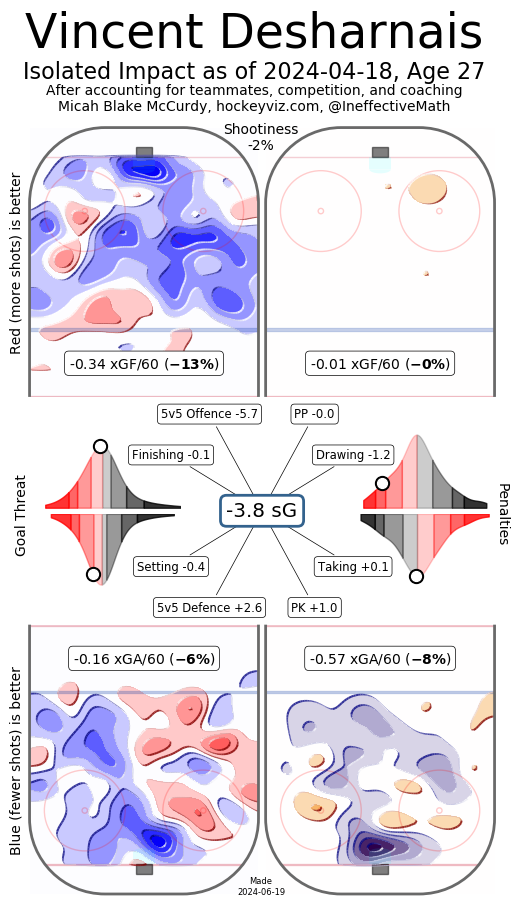The Vancouver Canucks love their tall defencemen.
They already had two tall boys on the blue line from last season: the tallest player in the NHL in Tyler Myers at 6'8" and Carson Soucy at 6'5". Early on July 1, they added 6'4" Derek Forbort in free agency. Then, to top it off, the Canucks concluded their business on July 1 by signing 6'7" Vincent Desharnais.
Along with his size, Desharnais has one other attribute that NHL teams love: he shoots right-handed.
Desharnais definitely fits with the profile of defencemen the Canucks have looked to acquire. The question is whether Desharnais fits what the Canucks actually need.
With his size and reach, Desharnais is effective in his own zone at clearing out the front of the net and taking away cross-seam passes in the middle of the ice. He's also an adept penalty killer and played a major role in the Edmonton Oilers' excellent kill during both the regular season and playoffs.
The downside is that Desharnais is a black hole offensively. He struggles to move the puck, which forces him to play more in his own end of the ice than you'd like to see. That caused some problems in the playoffs, where he played himself right out of the lineup for the Oilers, replaced by Philip Broberg.

There's value in what Desharnais brings to the lineup but it's arguably not worth $2 million per season. AFP Analytics projected a one-year, $1.1 million contract, which would be closer to what other bottom-pairing defencemen around the league have been getting paid in free agency. A $2 million cap hit feels like paying a premium for height rather than actual on-ice performance.
Most of all, there's no denying that Desharnais is a bottom-pairing defenceman. Desharnais was sixth among Oilers defencemen in average ice time at 5-on-5 last season, though he moved up to fifth including his minutes on the penalty kill. According to Puck IQ, Desharnais spent the fewest minutes matched up against elite competition among Oilers defencemen.
The Canucks' biggest need after a top-six winger was arguably a top-four defenceman on the right side who could move the puck. That's not Desharnais, which means, barring another signing or trade, that the Canucks will be expecting Tyler Myers to once again play second-pairing minutes next season.
There's still a chance the Canucks could add another defenceman, with some cheap reclamation projects available like Erik Brannstrom or Nick Blankenburg, but when legitimate top-four defencemen like Sean Walker and Alex Carrier signed to very reasonable deals, it feels like this was a missed opportunity for the Canucks to upgrade their blue line.
Here's where the Canucks stand in terms of the salary cap after the Desharnais signing.

Assuming approximately $1,000,000 for a backup goaltender, the Canucks have around $2.5 million in cap space remaining.
If the Canucks want to start the season without dipping into LTIR, they could have Tucker Poolman and his $2.5 million cap hit on their day-one roster. That would allow them to accrue cap space over the course of the season, potentially giving them more room to add to their roster via trade.
If that's the plan, the Canucks might not make many more signings as the offseason progresses.



